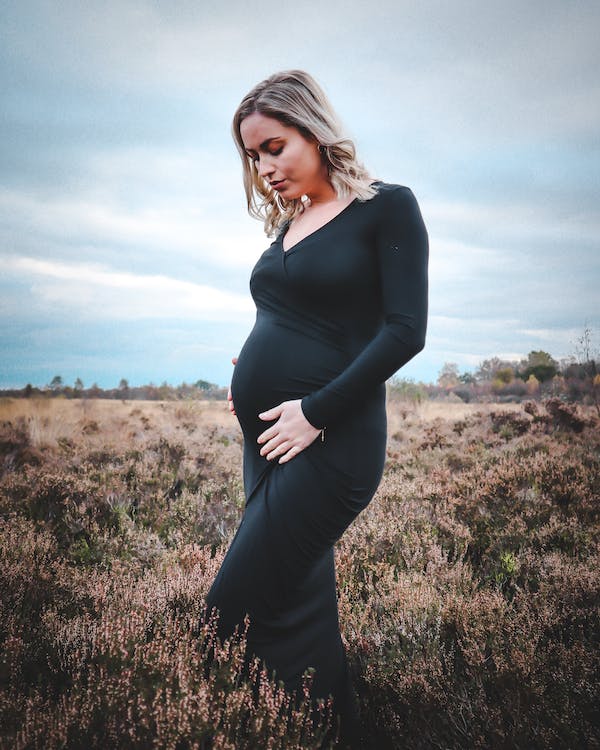In general menstrual cramps during pregnancy, you feel pain in the lower abdomen and pelvic area, typically there are numerous causes for these cramps.
These cramps may be natural symptoms of pregnancy due to implantation or uterine contraction on the other hand menstrual cramps during pregnancy are considered an alarm that there is something wrong.

What about the menstrual cycle
The menstrual cycle is a hormonal cycle repeated throughout a woman's reproductive life.
This cycle begins at the age of puberty and till menopause, it lasts about 24:38 days starting from the first day of the cycle till the first day of the next cycle and this cycle is not the same in every woman.
Menstruation (menstrual period) what does it mean
Before we discuss menstrual cramps during pregnancy we should be informed more about the menstrual period.
During the menstrual cycle, several changes happen for every woman who reaches puberty and starts the menstrual cycle as her body is prepared for receiving any possibility of pregnancy.
In this cycle, the egg develops in the ovary and is released to the uterus through the fallopian tube and the uterine lining starts to be thicker for receiving the egg.
If the egg isn't fertilized and there is no pregnancy the uterine lining sheds out in the form of bleeding which is your menstrual period (menstruation) this period of bleeding lasts for 3:7 days.
Some women have longer and heavier periods than others, the first day of bleeding on your period is the first day of the menstrual cycle.
The shedding of the uterine lining is accompanied by cramps but these cramps differ from menstrual cramps during pregnancy.

Phases of the menstrual cycle
The menstrual cycle is regulated by hormones through the interaction between follicular stimulating hormone, luteinizing hormone, and female sex hormones (estrogen, progesterone).
Follicular phase
This phase begins on the first day of your period as the thick top layer of the uterus is prepared for the nourishment of the fertilized egg which then develops as an embryo.
In case of that the egg isn't fertilized estrogen and progesterone hormones decreased so the thick top layer of the uterine lining degenerates and sheds out as bleeding is released through the vagina.
This bleeding accompanied by cramps isn't the same as menstrual cramps during pregnancy.
The pituitary begins to increase the secretion of follicle-stimulating hormone which stimulates the ovary to develop a group of follicles each follicle containing one egg.
Only one follicle which is the healthier one continues its growth, but the other follicles degenerate, this growing follicle secretes estrogen.
Ovulation phase
Rising estrogen levels stimulate the pituitary gland to secrete the luteinizing hormone, this hormone stimulates the growing follicle to rise on the surface of the ovary and rupture releasing the egg (ovulation).
During the growth of the follicle and its rupture, women may feel pain different from menstrual cramps during pregnancy; this pain is on the same side of the ovary of the developed egg.
The egg can be fertilized about 12 days after release but sperm can remain in the reproductive tract for about 5 days before the egg is released and a day after that.
Luteal phase
During this phase luteinizing hormone and follicle-stimulating hormone decrease.
After the follicle releases the egg it is converted to another structure called the corpus luteum this leads to an increase in the progesterone hormone level in the blood.
The progesterone hormone prepares the uterus for receiving any possibility of pregnancy as this hormone causes the uterine lining to be thicker to nourish the embryo.
If the egg is not fertilized the corpus luteum degenerates so estrogen and progesterone hormones decrease and the uterine lining sheds out with a new menstrual cycle.
But if the egg is fertilized the new embryo undergoes implantation in the uterine lining and the woman may feel menstrual cramps during pregnancy.
The cells around the embryo produce human chorionic gonadotropin which maintains the corpus luteum and secretes progesterone to keep the uterine lining nourishing the embryo to maintain pregnancy.
What about menstrual cramps during pregnancy?
Some pregnancies have cramps in their early stages, these cramps begin with early pregnancy as a result of the implantation of the fertilized egg in the uterine lining.
These cramps are usually mild to moderate and cause no pain called (implantation cramping). These cramps are like menstrual cramps during pregnancy when you feel as if your period is about to start. These cramps are nothing to worry about and also these cramps may occur with blood spots but differ in bleeding in the period.

Menstrual cramps during pregnancy; what is normal and what is not?
There are cramps during pregnancy that are common and natural due to the changes that happen to your body during pregnancy but other menstrual cramps during pregnancy are considered an alarm or indication of something wrong.
What are the Causes of Cramps during pregnancy?
In the first 16 weeks, some pregnancies have mild to moderate transmitted cramps. These cramps generally are resulting from changes in your body and normally happen.
Uterine growth
After implantation of the fertilized egg and the embryo begins in its stages of development we feel a pulling sensation as the uterus and abdomen muscles are stretched.
In the second trimester, we feel round ligament pain as the round ligament muscles support the uterus. When this ligament stretches you feel a sharp pain in the lower abdomen as menstrual cramps during pregnancy.
Gastrointestinal disorders
Hormonal changes have an effect also on the gastrointestinal tract causing some problems such as gas, bloating, and constipation all of which cause cramp sensations.
What should we do with these cramps during pregnancy?
If you are exposed to menstrual cramps during pregnancy you should rest yourself in some ways as
- Try to change your position from sitting or lying.
- Take plenty of water.
- Put a warm towel on the painful area.
- Try to do some relaxing exercises.
What about the cramps which are an indication of risk?
While some pregnancies have common cramps which are nothing to worry about there are serious causes of cramps such as:
Ectopic pregnancy
This case happens when the fertilized egg is implanted outside the uterus this causes sharp cramps treated by the doctor.
Miscarriage
This happens with vaginal spotting or bleeding with sharp menstrual cramps during pregnancy.
Placental abruption
This occurs when the placenta is separated from the uterus before the baby is born.
Preeclampsia
These cramps are accompanied by high blood pressure with protein in the urine.
Urinary tract infection
This infection causes lower abdomen cramps with painful urination.
Preterm Labor
If the cramps persist in the third trimester and progress this is almost an indication of preterm labor.
Conclusion
During the menstrual cycle cramps are common due to the shedding of the uterine lining.
Some pregnancies experienced menstrual cramps during pregnancy and some of them are naturally a result of changes in your body during pregnancy but there are serious cramps in which you must consult your doctor.
Read more about:
Breast Infection During Pregnancy


You must be logged in to post a comment.